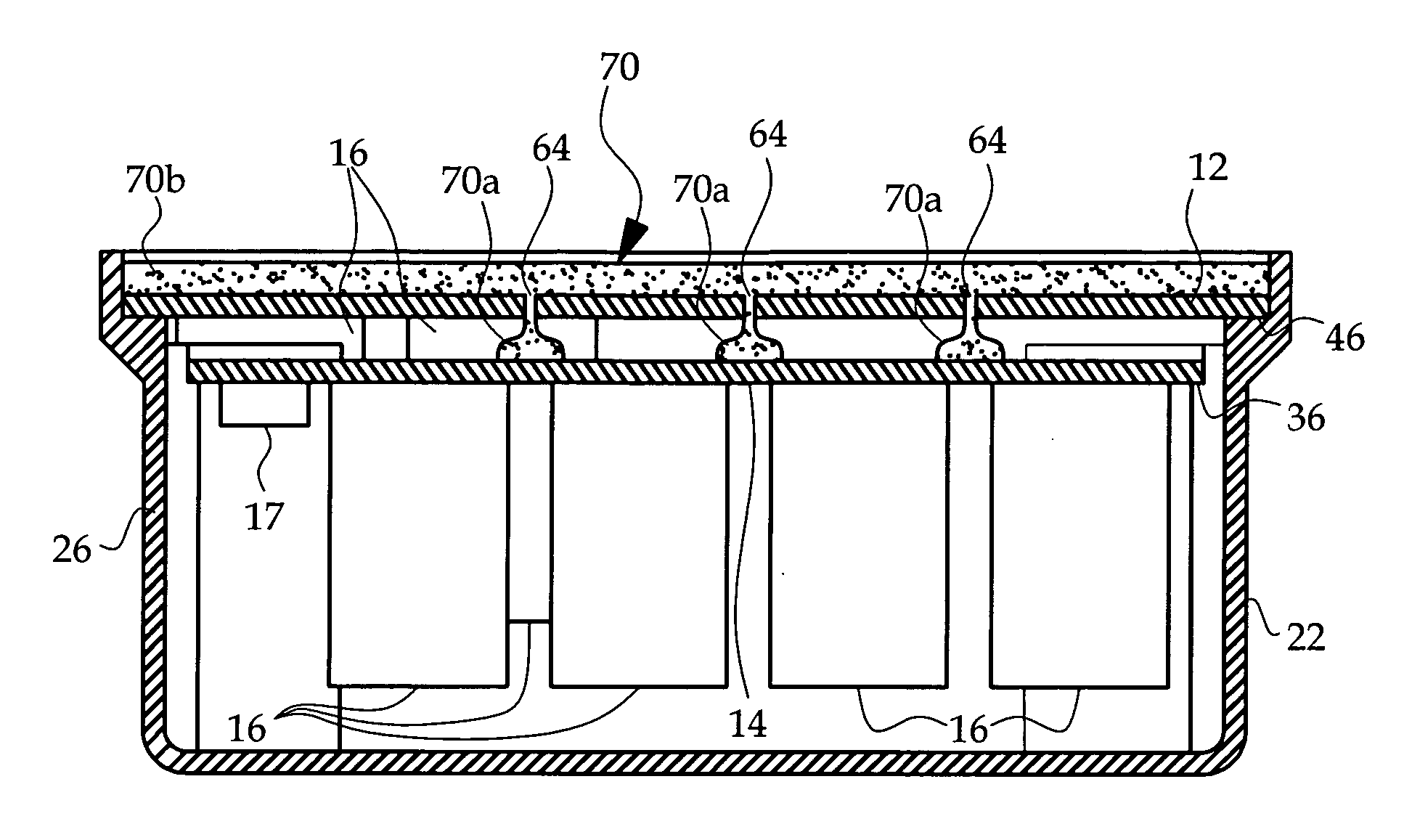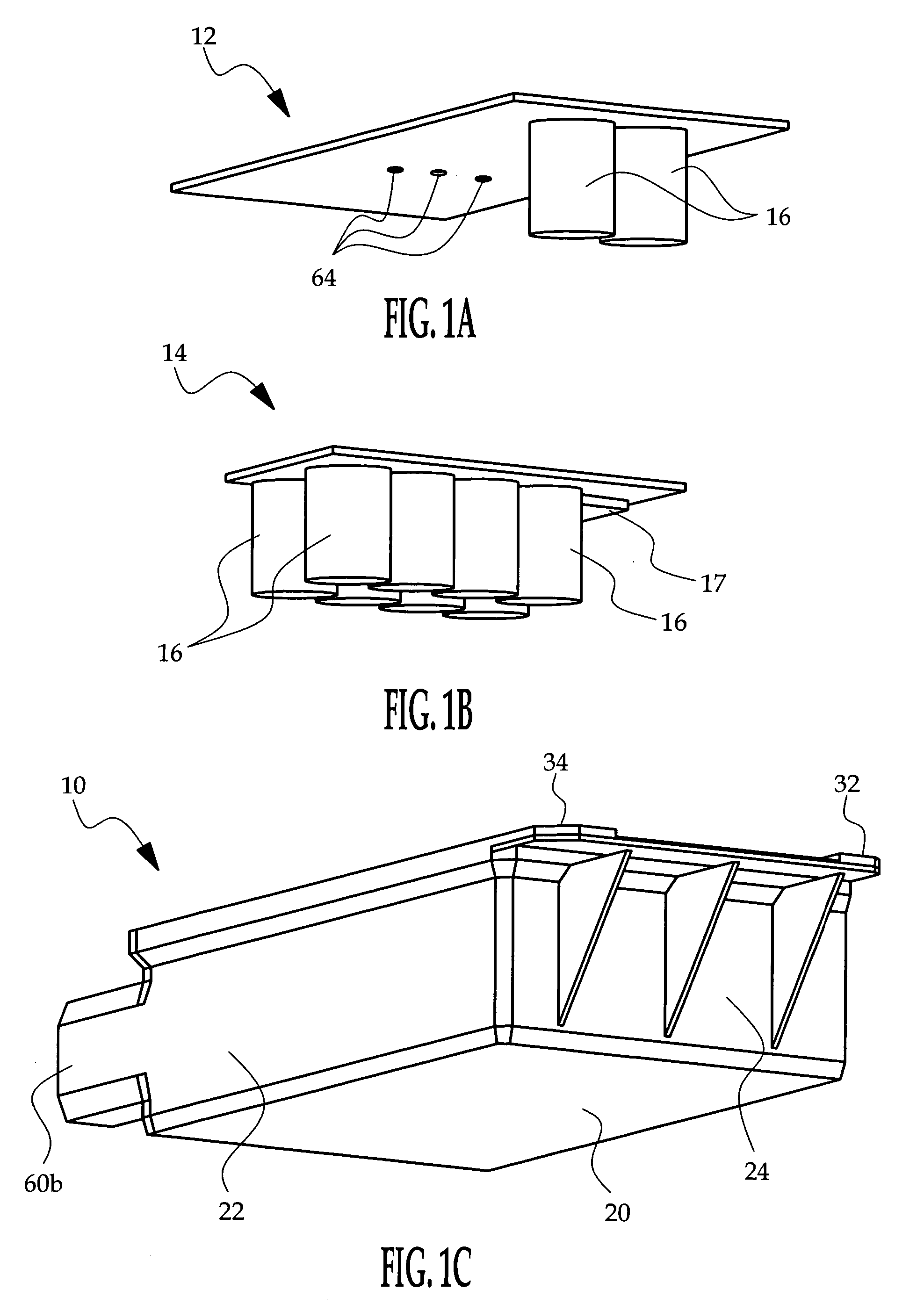Sealed fastenerless multi-board electronic module and method of manufacture
- Summary
- Abstract
- Description
- Claims
- Application Information
AI Technical Summary
Benefits of technology
Problems solved by technology
Method used
Image
Examples
Embodiment Construction
[0010] Referring to FIG. 1, the reference numerals 10, 12 and 14 respectively designate a housing, a main circuit board and an auxiliary circuit board. The main and auxiliary circuit boards 12, 14 are each populated with electronic components such as the capacitors 16 and accelerometer 17, and each board is oriented so that its major components face downward—i.e., toward the bottom 20 of housing 10. In general, the main and auxiliary circuit boards 12, 14 are installed into the housing 10 in the order depicted in FIG. 1, and then sealed in place with a potting material such as polyurethane applied to the exposed face of the main circuit board 12.
[0011] Referring additionally to FIGS. 2A-2C, the housing 10 includes side walls 22, 24, 26, 28 depending from the bottom 20 and a set of integral mounting tabs 30, 32, 34. The housing 10 is open-ended as shown to receive the populated circuit boards 12, 14. The auxiliary circuit board 14 is installed inboard of the main circuit board 12 as...
PUM
 Login to View More
Login to View More Abstract
Description
Claims
Application Information
 Login to View More
Login to View More - R&D
- Intellectual Property
- Life Sciences
- Materials
- Tech Scout
- Unparalleled Data Quality
- Higher Quality Content
- 60% Fewer Hallucinations
Browse by: Latest US Patents, China's latest patents, Technical Efficacy Thesaurus, Application Domain, Technology Topic, Popular Technical Reports.
© 2025 PatSnap. All rights reserved.Legal|Privacy policy|Modern Slavery Act Transparency Statement|Sitemap|About US| Contact US: help@patsnap.com



